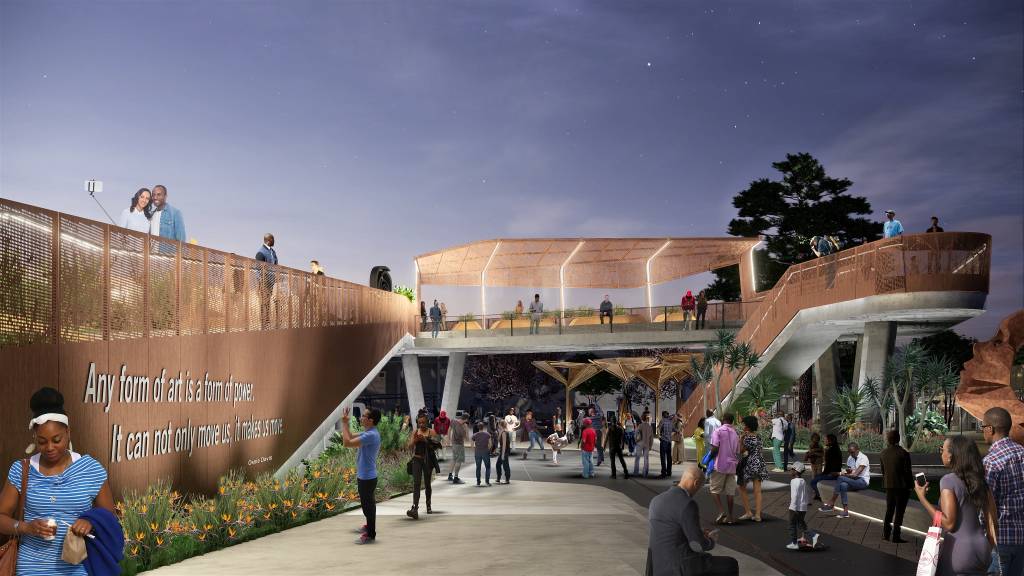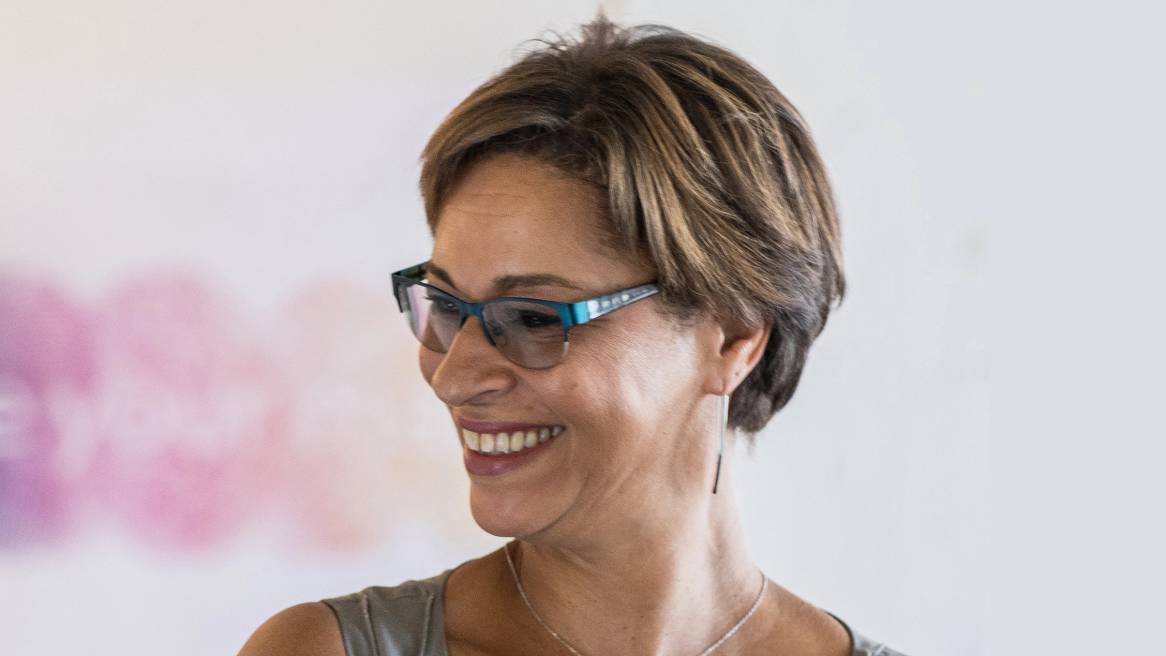Diversity in Design: Q+A with Gabrielle Bullock
An Amplifying Diverse Voices spotlight on Perkins&Will’s director of global diversity.
“The reason we’re having conversations around diversity is because there’s not enough representation. There are whole sections of society excluded from the design profession.”
Gabrielle BullockDirector of Global Diversity, Perkins&Will
As the second Black female to graduate from the architecture department of the Rhode Island School of Design in 1984, Gabrielle Bullock has been key to Perkins&Will’s success as both an award-winning principal and a social justice advocate. Gabrielle brings purpose to her profession, and she’s done so throughout her many roles in healthcare space design, higher education space design, and now as director of global diversity. Her experiences at Perkins&Will and in the communities the firm serves have driven her passion for advancing diversity and inclusion in the design profession far and wide.
Gabrielle and the Perkins&Will Diversity Council set the global strategy and focus for the firm’s Justice, Equity, Diversity and Inclusion (J.E.D.I.) program, advancing the firm each year toward a more equitable and culturally competent organization.
360: What inspired your career in architecture and design?
Gabrielle Bullock: I grew up in the Bronx. Traveling through the city on my weekend visits to Queens I saw the public housing projects and experienced them first-hand. I immediately felt the inequity in the way low income Black and other people of color lived. As a kid I had considered myself an artist, so at 12 I decided I wanted to be an architect. I wanted to change the way my people lived.
My goal when I graduated college was creating affordable housing. At the beginning of my career I worked for three housing firms that all went belly up during the 1980s recession. Moving forward, I wasn’t interested in designing glossy skyscrapers or fancy homes. Whatever I did, I knew it had to have a purpose. This drive led me to begin designing for healthcare and eventually doing the work I do today.
360: Why is diversity in design so important and what barriers exist?
GB: Diversity is important, but if you leave it at diversity, you’re only checking a box or you’re plugging in numbers. If you hire a certain amount of people in a demographic, you may think you’ve done a good job. But what’s wrong with that thinking is it’s not the full picture. I would stress inclusion, equity, engagement, and justice. All of these combined are important to represent cultural competency and belonging in practice and design.
It’s important for designers to recognize that it’s a failure if we don’t become culturally competent in our designs and reflect what our constituents need. It’s not about how many chairs are in the room or the color on the wall; it’s about how the space feels and if it feels inclusive. For example, if I walk into a museum as a Black woman, do I feel welcomed? In some museums yes, in many others I don’t. In some I feel as if it wasn’t designed with me in mind because culturally it doesn’t represent me. To design spaces with cultural competency, we must do the research to understand the history and lived experiences of the communities we’re creating for, in order to better represent their culture in the space.
360: We often hear about the phrase DEI but you mentioned one of your focuses in J.E.D.I. is justice. What is the importance of justice and what does justice mean to you?
GB: Justice is fairness and understanding not everybody starts off on an equal platform. It is about recognizing the injustices happening around you and the different ways racism is perpetuated through systemic and institutional structures. For instance, in architecture and land use, redlining has perpetuated injustices. Black people were told they could only live in certain parts of the city. Often, those neighborhoods were in less-than-ideal locations and not as invested in as others. Now, 50-60 years later, we have examples like South LA where people question why the neighborhood isn’t taken care of when, at the very beginning, the neighborhood was created to keep Black people in a box.
We must understand the injustice along with the policies and programs reinforcing it. We have to challenge the status quo and challenge our clients to recognize the injustices in their space.
360: How can the physical environment help people feel more included at work?
GB: When designing for the workplace, it’s important to take into account the different personal situations and experiences our people have. In the office, we need to get away from everything looking and feeling the same. It’s essential to create a variety of spaces to allow for a diverse workforce to feel comfortable.
At home, it’s even more imperative to consider our workers’ perspectives. With many working from home, there are inherent inequalities in employees’ situations that affect how they’re able to get work done. We cannot put the same blanket of expectation on everybody. We must get out of the status quo thinking that what worked yesterday will work today and that what may work for one works for all. I believe that, to move forward, we have to challenge every status quo decision that we’ve made in the past—from how we design a space to the criteria used in recruiting, hiring, and promoting individuals.
360: The past year has been exceptionally difficult for marginalized communities. How are you looking ahead after such a challenging year?
All of the major challenges happening right now—the downturn of the economy, the COVID-19 health crisis, and the racial injustices being brought to light—I consider an opportunity for a reset for everybody.
The design community is particularly slow to change but as some of the most creative people on the planet, we are in a unique position to really make an impact.

360: How do you approach finding ways to elevate and include more diverse perspectives in the design industry?
GB: We have to stay curious and keep learning about other cultures and perspectives. The simplest way is sharing stories of diverse designers. Showing their work, hearing their lived experiences and learning what drives them. Lived experiences can tell a lot about the way we design and the way we impact the built environment.
While we don’t have to sell the business case anymore, it’s now important for our teams and our leaders to be more culturally competent. We can’t expect the handful of Black designers we have in this country to contribute to every project. We all have to learn how to design in any community by being curious and engaging the community in a meaningful way as a design partner.
 Gabrielle Bullock and her co-host Karen Compton tackle the uncomfortable conversation around race and inequity in design & construction through the podcast series Breaking the Silence of Design.
Gabrielle Bullock and her co-host Karen Compton tackle the uncomfortable conversation around race and inequity in design & construction through the podcast series Breaking the Silence of Design.


